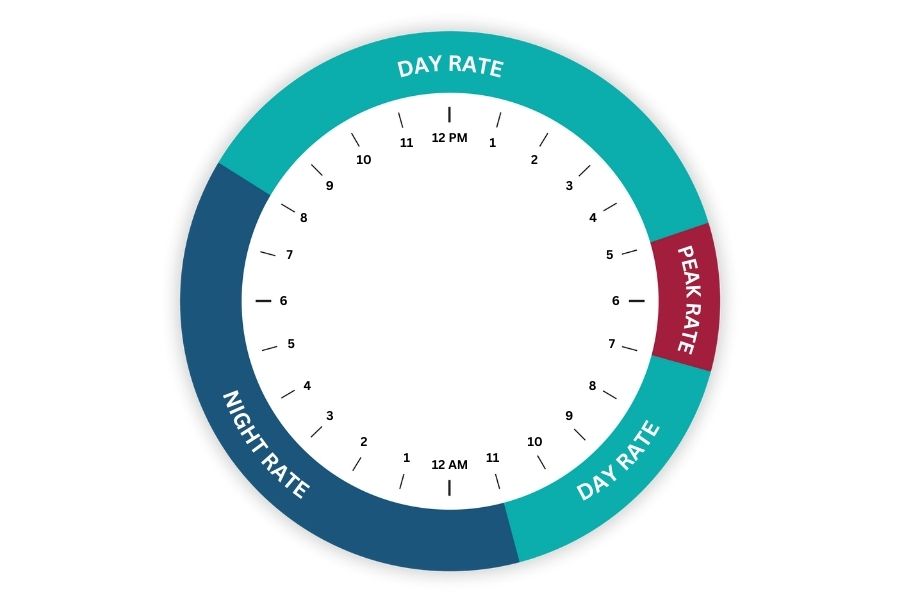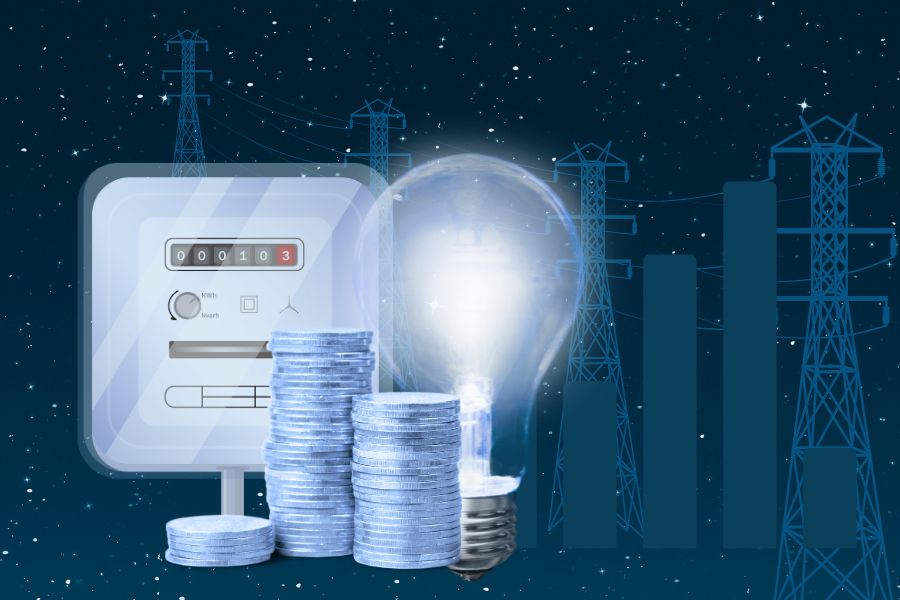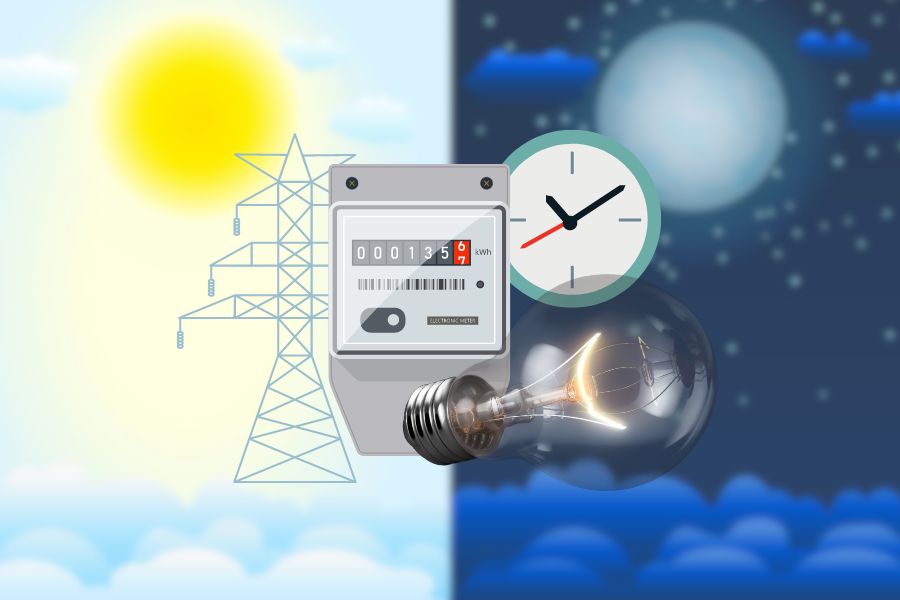In Ireland, finding the cheapest time to use electricity hinges on factors like smart meter usage, your electricity supplier, and the tariff plan you’ve subscribed to. If you’re using a ‘Night Saver’ tariff with a night meter, night-time proves cheaper for electricity use.
Shifting electricity usage between 11 pm and 8 am can also lead to savings. Additionally, understanding the principles of Time of Use (TOU) tariffs, smart meters, and different electricity tariffs can help optimize energy usage for cost reduction.
What Is the Cheapest Time to Use Electricity in Ireland?

The cheapest time to use electricity in Ireland depends on various factors, such as having a smart meter installed, your electricity supplier, peak hours, the availability of free electricity options, and the specific tariff plan you are on. If you have a night meter and a “Night Saver” tariff, electricity is cheaper at night.
Night-time and off-peak hours rates are lower if you have a Smart Meter and opt for a Smart Tariff. However, daytime and peak rates between 5 pm and 7 pm can be more expensive.
To save money on a perfect tariff, shifting some of your daytime electricity usage to the hours between 11 pm and 8 am is beneficial. It’s essential to check with your electricity supplier and review the details of your specific tariff plan for accurate information on the cheapest time to use electricity.
Time Of Use Tariffs Explained
Time of Use tariff (TOU) is a pricing structure for electricity that varies based on the time of day. With TOU tariffs, electricity rates are divided into different periods, typically categorized as peak, off-peak, and sometimes shoulder periods.
TOU tariffs encourage consumers to shift their energy usage away from peak hours when electricity demand is highest, thus reducing strain on the grid and promoting energy efficiency.
Peak hours are typically during the day when electricity demand is at its highest, often coinciding with business hours and evening periods. Off-peak hours are typically late at night and early morning when electricity demand is lowest. Shoulder periods fall between peak and off-peak hours and may have slightly higher rates than off-peak but lower rates than peak hours.
By aligning their energy usage with off-peak or shoulder periods, consumers can use lower electricity rates and save on energy bills. The incentivizes using energy-intensive appliances, such as dishwashers, washing machines, and electric vehicle charging, during off-peak hours when rates are more favorable.
Smart meters often facilitate TOU tariffs to enable real-time monitoring of energy usage. In addition, it provides accurate data for billing based on different periods. It allows consumers to make informed decisions about when and how they consume electricity, optimizing their energy usage to reduce costs.
It’s important to note that the specific periods and rates for TOU tariffs may vary depending on the electricity meter, supplier, and location. Consumers who adopt TOU tariffs should contact their electricity suppliers to understand the options and associated pricing structure.
How Does a Smart Meter Work?

A smart meter is an advanced device that measures and records electricity consumption in real time, including usage from appliances like a washing machine. It replaces traditional analog meters and enables two-way communication between the consumer and the utility company.
The smart meter measures electricity usage and securely transmits the data to the utility company, eliminating the need for manual meter readings.
This real-time data allows consumers to monitor their energy usage, identify patterns, and make informed decisions about their consumption.
Additionally, smart meters enable utility companies to remotely connect and disconnect service, provide accurate billing based on time-of-use tariffs, and improve overall grid management for efficient energy distribution.
How Do Electricity Tariffs Work?
Electricity tariffs are pricing structures that determine how to charge consumers for their electricity consumption. These tariffs are typically set by electricity suppliers and regulated by governing bodies. The main components of electricity tariffs include:
Unit Rate
They usually measure the cost per unit of electricity consumed in kilowatt-hours (kWh). It is the primary factor that determines the electricity cost.
Standing Charge
It is a fixed daily or monthly fee that covers electricity costs. That includes metering and maintenance costs.
Time-of-Use (TOU) Tariffs
Some tariffs vary based on the time of day, with different rates for peak, off-peak, and sometimes shoulder periods. TOU tariffs incentivize consumers to shift their energy usage to off-peak hours when electricity demand is lower.
Seasonal Variations
Tariffs may have different rates for different seasons, reflecting electricity demand and supply changes.
Renewable Energy and Green Tariffs
Some tariffs promote using renewable energy sources by offering lower rates for electricity generated from renewable sources.
How Much Cheaper Is Electricity With a Night Saver Meter?

Electricity is significantly cheaper with a NightSaver meter if one consumes a substantial amount of electricity during the designated off-peak hours.
Based on the provided rates from Electric Ireland (as of May 2023), the NightSaver Tariff offers a lower night rate of 22.8c per kWh compared to the day rate of 46.23c per kWh.
However, the potential savings depend on the percentage of electricity used during the off-peak hours. More than 30% of electricity usage must be at night to make any savings.
For example, with 40% night-time usage, the annual savings can amount to €175, and with 50% night-time usage, the savings can reach €274. Consider specific usage patterns and appliances you can schedule during off-peak hours to maximize the cost savings with a NightSaver meter.
Comparison of Normal Tariff With NightSaver In Ireland
In Ireland, the Normal Tariff and NightSaver Tariff are two electricity pricing options offered by suppliers. Here’s a comparison between the two:
Normal Tariff
- Pricing: The Normal Tariff has a standard pricing structure with a consistent unit rate throughout the day, regardless of usage time.
- Applicable Hours: The Normal Tariff does not differentiate between peak and off-peak hours, so the same rate is always applicable.
- Flexibility: Users have flexibility in electricity usage, as there are no specific time restrictions or requirements.
- Suitability: The Normal Tariff is generally suitable for individuals or households with relatively stable energy consumption patterns and who don’t prefer time-based savings.
NightSaver Tariff
- Pricing: The NightSaver Tariff offers different rates for electricity usage during specific off-peak hours, typically at night.
- Applicable Hours: The NightSaver Tariff designates specific off-peak hours, typically from midnight to 9 am, where lower rates apply.
- Time Restrictions: To benefit from the lower rates, users must concentrate their energy usage, particularly energy-intensive activities like running appliances, during the designated off-peak hours.
- Suitability: The NightSaver Tariff is often favored by individuals or households that can shift a significant portion of their electricity usage to off-peak hours, such as those with electric heating systems, electric vehicle charging requirements, or those who can schedule energy-intensive tasks during the off-peak period.
When comparing the two tariffs, you should consider their energy consumption habits, lifestyle, and the feasibility of adapting to off-peak usage requirements.
Calculating the potential savings based on their specific usage patterns will help determine which tariff offers the most cost-effective option.
We recommend you consult with electricity suppliers and evaluate the pricing structures and terms to make an informed decision based on personal preferences and needs.
How Much Could You Save on NightSaver Meter In Ireland?
With a NightSaver meter in Ireland, potential savings depend on the percentage of electricity used at night. Based on the average household usage of 11 units per day (4,200 kWh annually), savings can range from €77 to €372 per year, with 30% to 60% of electricity usage during off-peak hours.
Conclusion
We’ve uncovered the secrets to finding the cheapest time to use electricity in Ireland.
Remember, it’s all about being a savvy energy detective and taking advantage of time-of-use tariffs and free electricity options.
Whether rocking a smart meter or planning a late-night laundry party, optimizing your energy usage can lead to significant savings.
So go forth, power-conscious pals, and conquer those electricity bills like the energy-saving superheroes you are! Let’s keep the lights on and the wallets happy. Stay powered up, Ireland!
